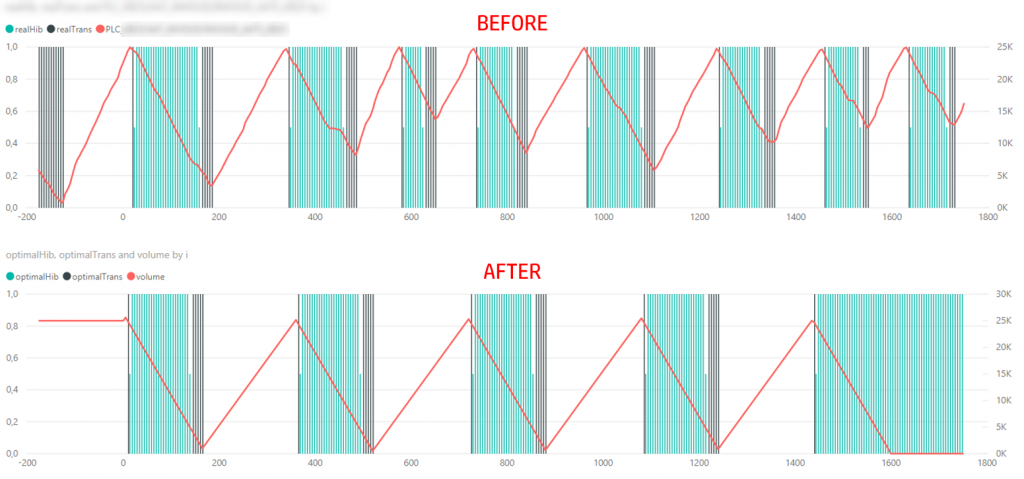At least as important as process optimization is good support for your operators. In this case we are looking at a large flow of information with high variability, which has to be processed by an operator at stressful moments. This makes it not easy to make good decisions. That is precisely why this project worked on simplifying this burden for operators.

How does it work?
In this case, an operator must decide when to start a production machine. The production machine fills a barrel with product. From the barrel, the product is retrieved to be packaged. Since ideally the packaging machine should run continuously, we want the barrel to always contain product. However, filling the barrel happens faster than emptying the barrel because there is a difference on the flow rates. To ensure that the barrel does not overflow, the production machine will have to be started and stopped several times.
It is not easy to choose when to start the production machine. In fact, there is a variable startup time that depends on a lot of different factors. It is here that the difficult decision lies for the operator: start too late and the barrel will already be empty causing the packaging line to stop or start too early causing the barrel to still contain a large volume, in this case many startups which also involves a greater energy cost.
In the picture you can see a red line representing the level of the barrel. In the upper case, the operator decides when to start the production machine, resulting in a not ideal behavior with at least 9 startups. Why does this happen this way? Ideally, the operator wants to be as safe as possible and definitely start up on time. The optimal situation is the bottom graph where the barrel was just not empty yet before producing again, which corresponds to 4 startups for the same batch.
So for the operator it is very stressful to start analyzing the variability and all the inputs to make the right decision. Moreover, the operator has to do this not for 1 production machine but for several at the same time. In the solution, the operator is
less or not burdened with making the choices for startup times. A model reads and analyzes all inputs to the system and predicts the startup time to calculate the ideal starting time. This ideal starting time is either shown to the operator as a guide to rely on or is immediately incorporated into the system to give the machine a start signal.
Where is the difference being made?
In Operator 5.0, a whole range of difficult decisions are simplified by having the large amount and highly variable input analyzed by a model.
In this use case, the operator is supported. He/she gets a dashboard with the different inputs but also a suggestion of ideal starting time. The operator can still make the decision to start and stop on his/her own choices or according to the model. The model guarantees that if started before the ideal starting time, the barrel will never empty before production is restarted. The model is continuously monitored and evaluated in order to react quickly to a changed situation.
Advantages Operator 5.0
- Process and analyze a large amount of highly variable inputs
- Present output in a convenient form (in this case: ideal starting time)
- Avoid/reduce stressful situation for operators
- Save energy by reducing the number of startups


